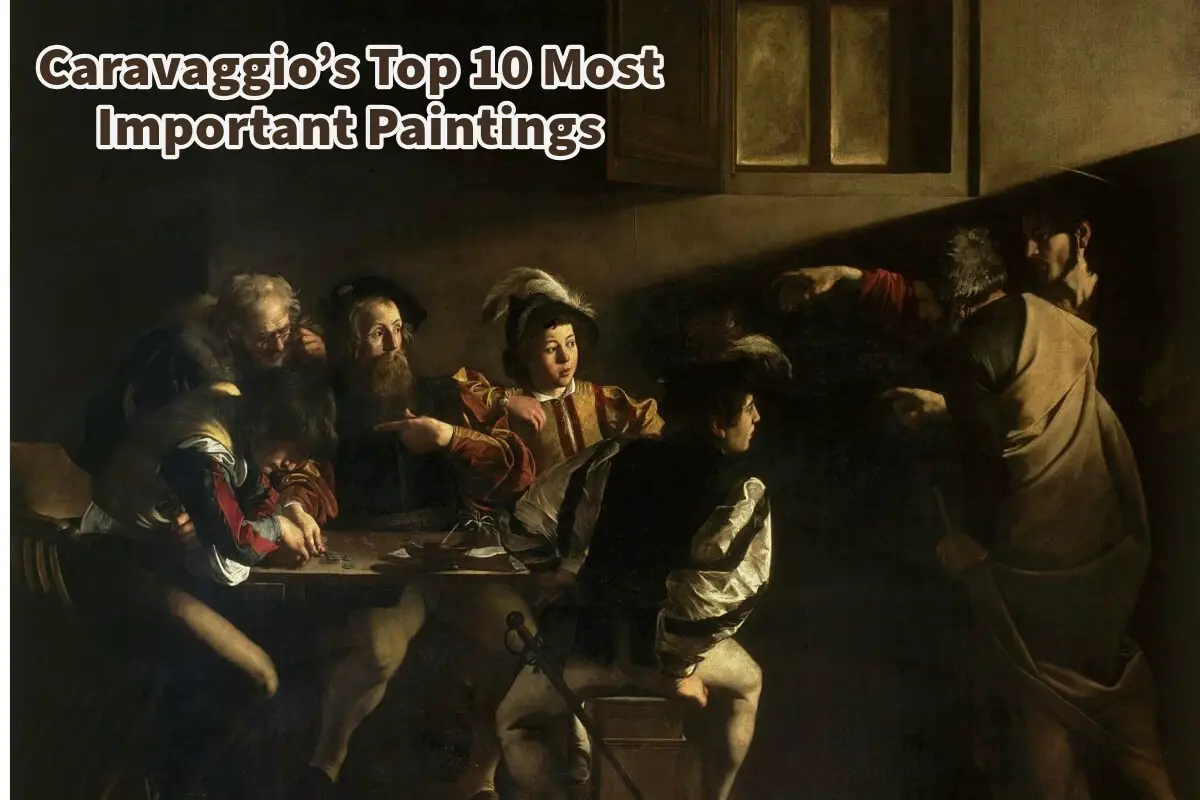Caravaggio is undoubtedly one of the most influential artists in history. Often considered the “bad boy” of art, he lived a tumultuous life that ended mysteriously. Despite his turbulent existence and spending his final years on the run, Caravaggio created a remarkable body of work that continues to captivate and inspire. His mastery of dramatic realism and chiaroscuro revolutionized painting and left an indelible mark on the art world.
We will explore Caravaggio’s top 10 masterpieces. Each painting demonstrates his extraordinary talent and ability to convey profound human emotions through his unique artistic style. As a bonus, we’ve included what we see as his number 11 masterpiece, providing a deeper insight into the genius of Caravaggio’s work. Join us on this journey through the life and art of one of history’s most enigmatic and influential painters.
Table of Contents
- The 10 Most Important Paintings By Caravaggio (And Bonus No. 11)
- 1. The Calling of Saint Matthew (1599-1600)
- 2. Judith Beheading Holofernes (1598-1599)
- 3. The Supper at Emmaus (1601)
- 4. The Conversion of Saint Paul (1600-1601)
- 5. David with the Head of Goliath (1609-1610)
- 6. The Martyrdom of Saint Matthew (1599-1600)
- 7. Bacchus (1596-1597)
- 8. The Incredulity of Saint Thomas (1601-1602)
- 9. The Taking of Christ (1602)
- 10. Narcissus (1597-1599)
- 11. Ecce Homo: (1605-1609) – Our Bonus Number 11 Masterpiece
- Related Questions
The 10 Most Important Paintings By Caravaggio (And Bonus No. 11)
Michelangelo Merisi da Caravaggio (1571-1610), an Italian Baroque painter, revolutionized the art world with his realistic observation of the human state, both physical and emotional.
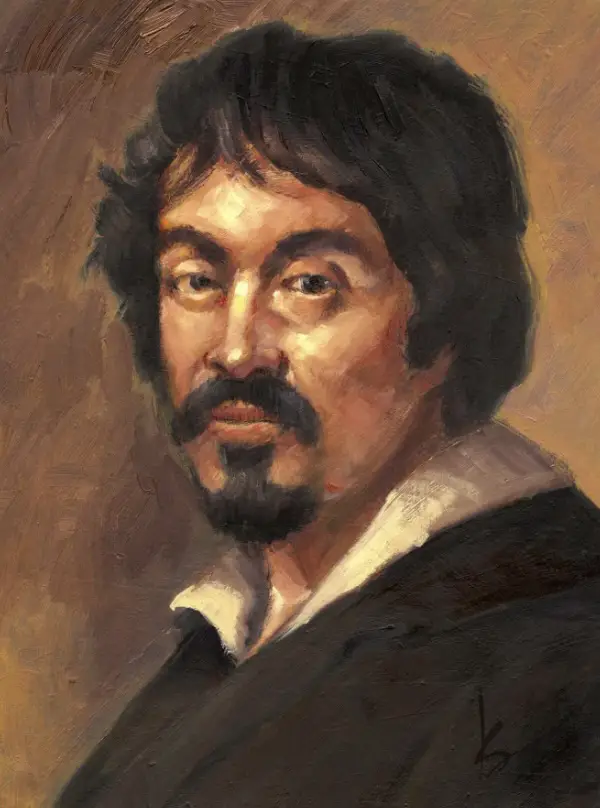
He is also renowned for his dramatic use of lighting, a technique known as chiaroscuro, which became a hallmark of his work. Here, we explore ten of Caravaggio’s most important paintings, highlighting their significance in art history and explaining why they are his masterpieces.
1. The Calling of Saint Matthew (1599-1600)
“The Calling of Saint Matthew” is one of Caravaggio’s most celebrated works and a cornerstone of Baroque art. This painting was created for the Contarelli Chapel in the Church of San Luigi dei Francesi in Rome.
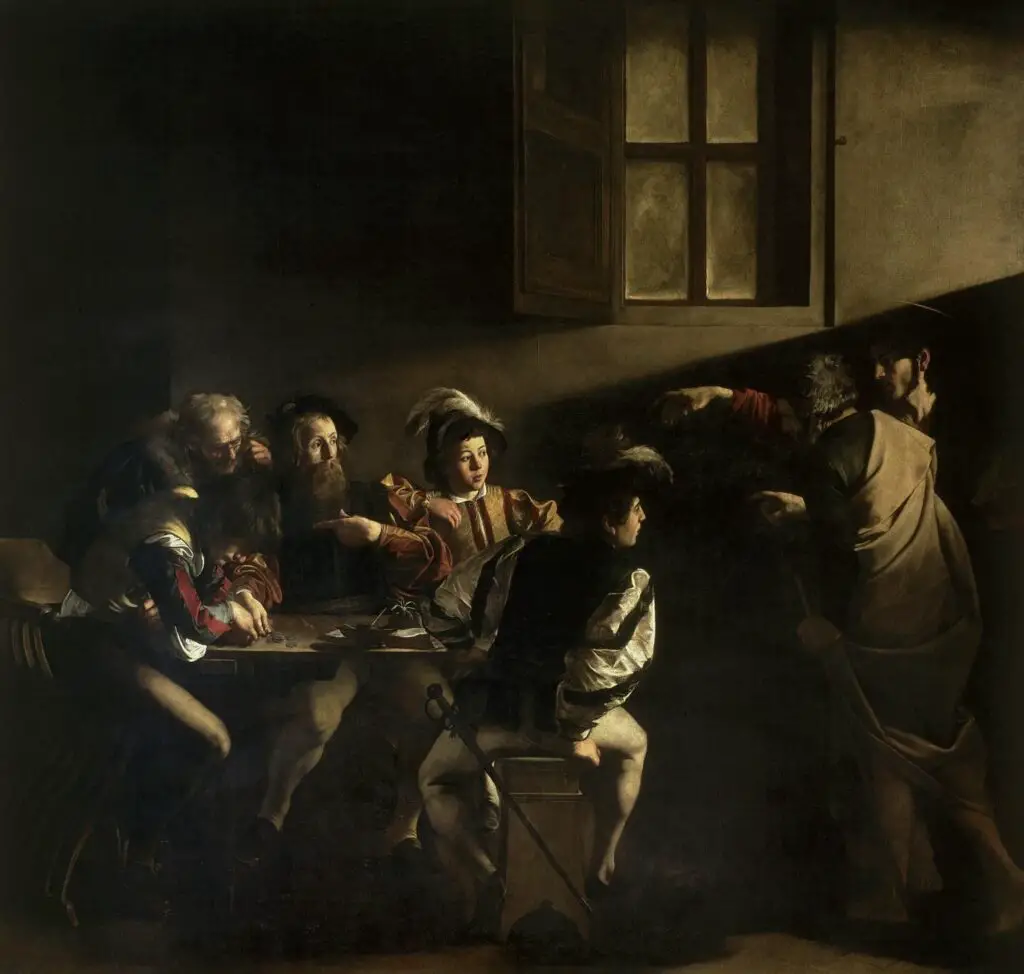
The composition captures the moment Jesus calls Matthew, a tax collector, to follow him. Caravaggio’s use of light draws attention to Matthew’s surprised expression and Jesus’s masterful gesture. The stark contrast between light and shadow enhances the painting’s dramatic effect and highlights Matthew’s spiritual awakening.
2. Judith Beheading Holofernes (1598-1599)
“Judith Beheading Holofernes” portrays the biblical story of Judith, a Jewish widow, beheading the Assyrian general Holofernes to save her people. This work exemplifies Caravaggio’s ability to convey intense emotion and drama.

The painting’s raw depiction of violence, combined with Judith’s determined expression and Holofernes’ agony, makes it one of Caravaggio’s most potent works. The interplay of light and shadow heightens the scene’s immediacy and tension, illustrating Caravaggio’s mastery of chiaroscuro.
3. The Supper at Emmaus (1601)
“The Supper at Emmaus” depicts the moment the resurrected Jesus reveals his identity to two disciples during a meal. Caravaggio captures the disciples’ surprise and wonder with remarkable realism. The detailed depiction of the food and the dramatic gestures of the figures create a sense of immediacy and presence.
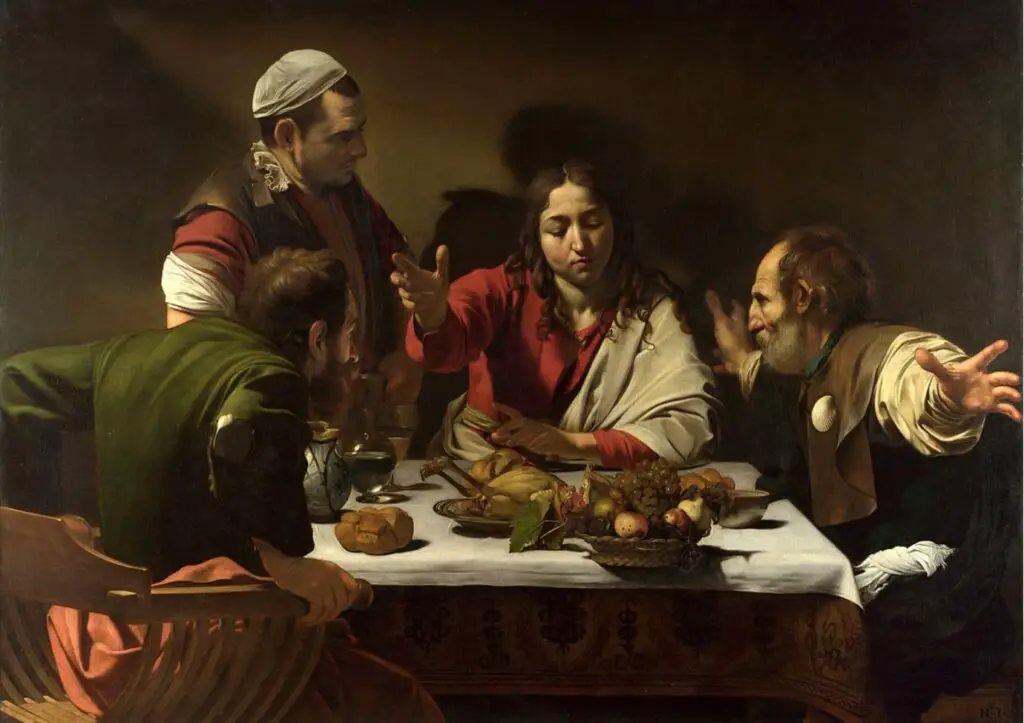
This painting is notable for its use of light to highlight spiritual revelation and naturalism in depicting everyday objects, demonstrating Caravaggio’s skill in blending the sacred with the ordinary.
4. The Conversion of Saint Paul (1600-1601)
“The Conversion of Saint Paul” illustrates the biblical account of Paul’s dramatic conversion on the road to Damascus. Caravaggio presents Paul, struck by divine light, falling from his horse.
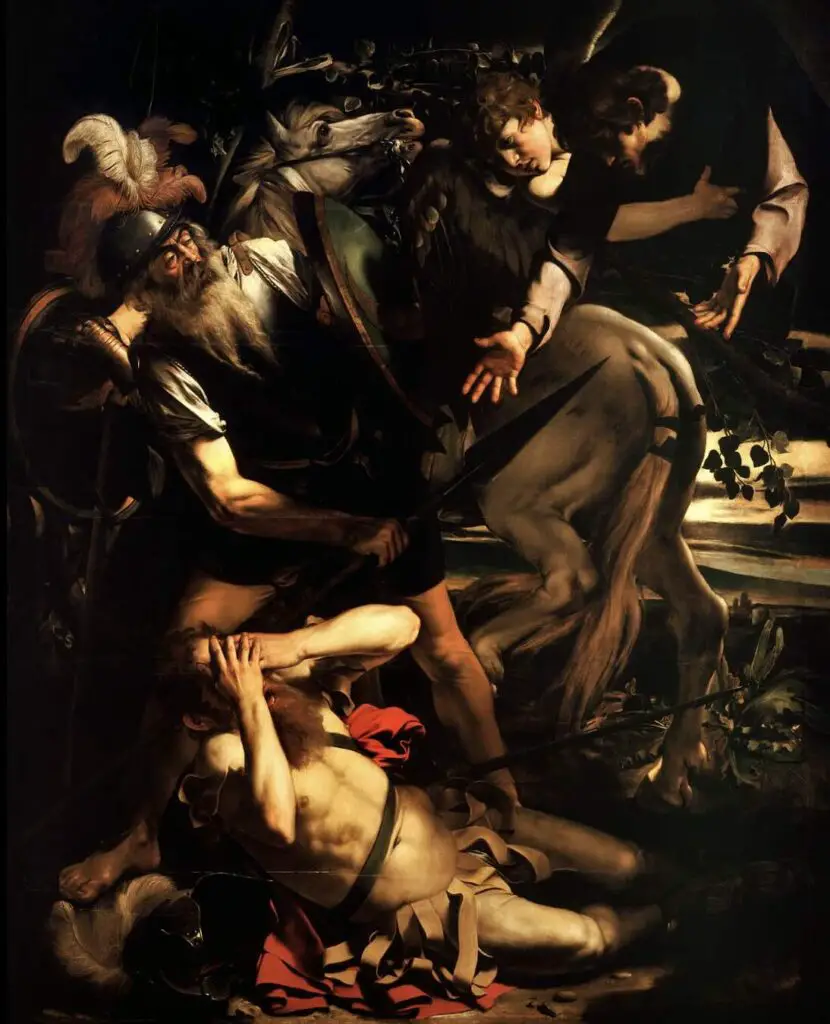
The painting’s composition focuses on Paul’s transformative experience, using light to symbolize divine intervention. The naturalistic depiction of the horse and Paul’s vulnerability creates a powerful visual narrative. This work is a testament to Caravaggio’s ability to convey profound spiritual moments through intense realism and dramatic lighting.
5. David with the Head of Goliath (1609-1610)
In “David with the Head of Goliath,” Caravaggio portrays the young David holding the severed head of the giant Goliath. The painting is believed to be a self-portrait of Caravaggio as Goliath, reflecting his turbulent life and inner turmoil.

The work stands out for its psychological depth and emotional intensity. The contrast between David’s youthful innocence and the grotesque head of Goliath emphasizes the painting’s dramatic tension. Caravaggio’s use of chiaroscuro enhances the sense of realism and draws attention to the haunting expressions of both David and Goliath.
6. The Martyrdom of Saint Matthew (1599-1600)
“The Martyrdom of Saint Matthew” depicts the moment of Saint Matthew’s martyrdom, executed for his faith. This large-scale painting, created for the Contarelli Chapel, showcases Caravaggio’s ability to handle complex compositions with multiple figures.
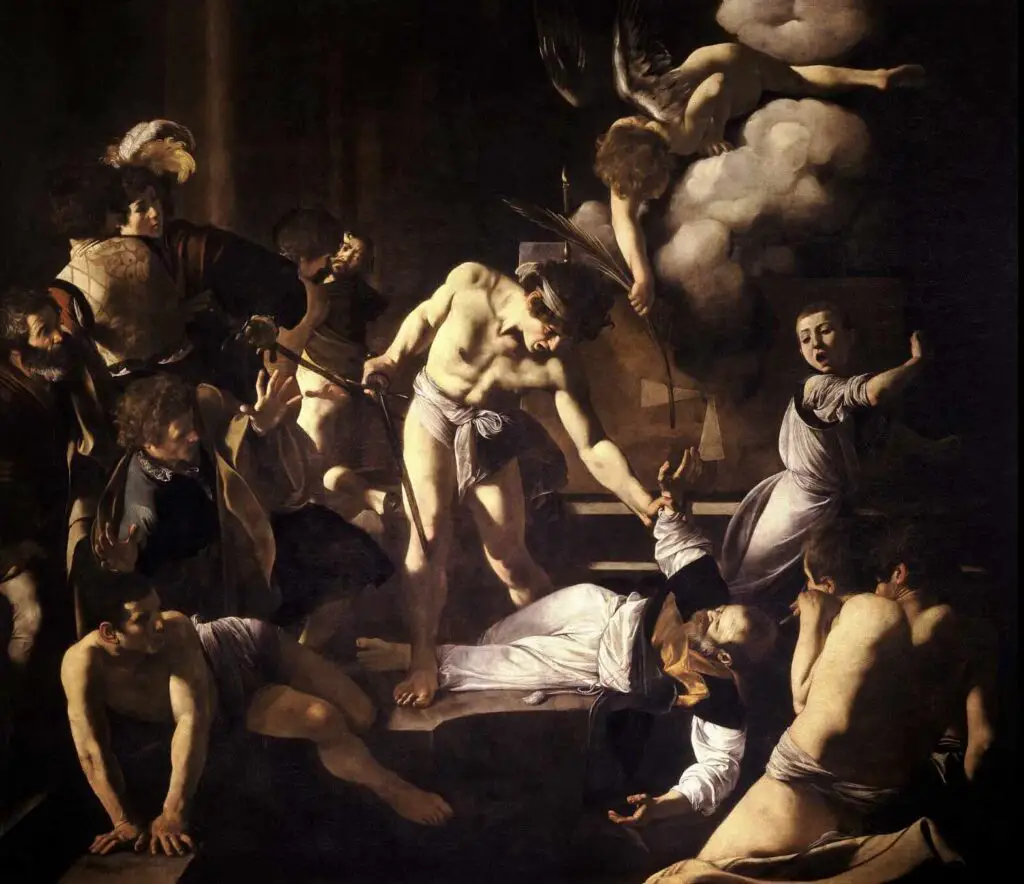
The chaotic scene captures the violence and chaos of martyrdom, with Matthew reaching out to an angel for salvation. The dynamic use of light and shadow emphasizes the drama and urgency of the moment, highlighting Caravaggio’s skill in creating powerful visual narratives.
7. Bacchus (1596-1597)
“Bacchus” presents a young man dressed as the Roman god of wine, holding a glass and a fruit bowl. This work is a prime example of Caravaggio’s early exploration of still life and portraiture.

The realistic depiction of the fruits and the delicate play of light on Bacchus’ skin showcase Caravaggio’s technical skill and attention to detail. The painting’s sensuality and lifelike quality make it a significant work in Caravaggio’s oeuvre, illustrating his ability to blend mythology with everyday realism.
8. The Incredulity of Saint Thomas (1601-1602)
“The Incredulity of Saint Thomas” captures the moment the doubting apostle Thomas touches the resurrected Jesus’ wounds to verify his resurrection. Caravaggio’s depiction of this intimate and dramatic moment emphasizes the physicality and humanity of the scene.
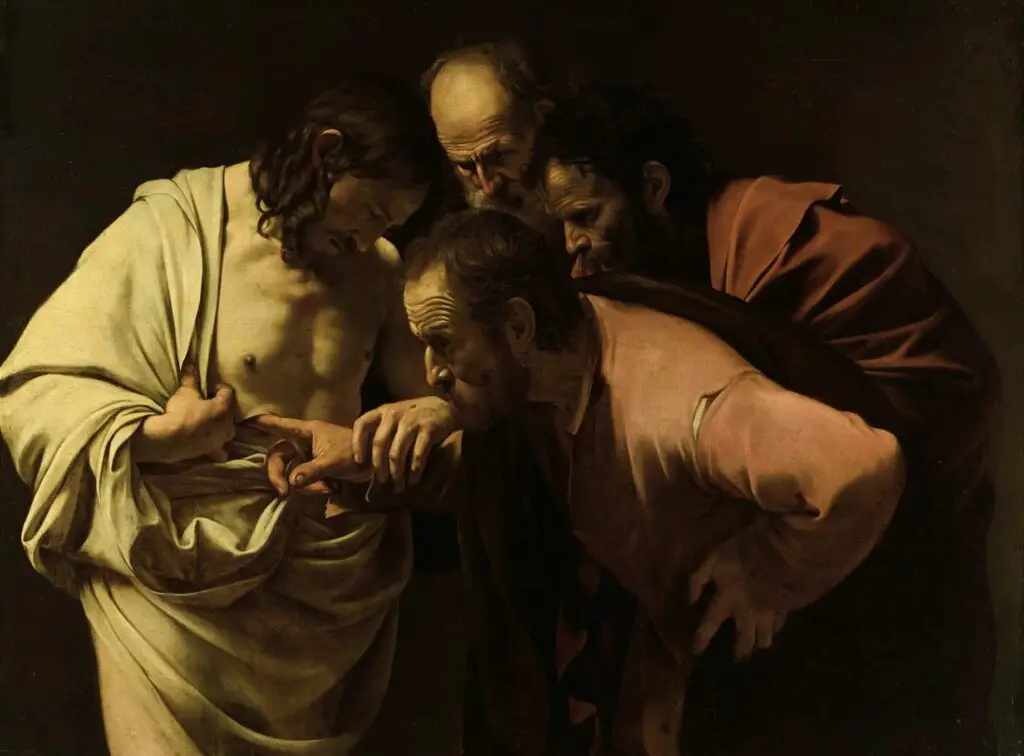
The detailed rendering of the figures’ expressions and gestures, combined with light to highlight the focal points, creates a powerful visual impact. This painting is celebrated for its realism and emotional depth, exemplifying Caravaggio’s ability to convey complex theological themes through naturalistic representation.
9. The Taking of Christ (1602)
“The Taking of Christ” depicts Judas’s betrayal of Jesus and his subsequent arrest. The painting’s dramatic composition, with its intense chiaroscuro and dynamic arrangement of figures, creates a sense of movement and urgency.
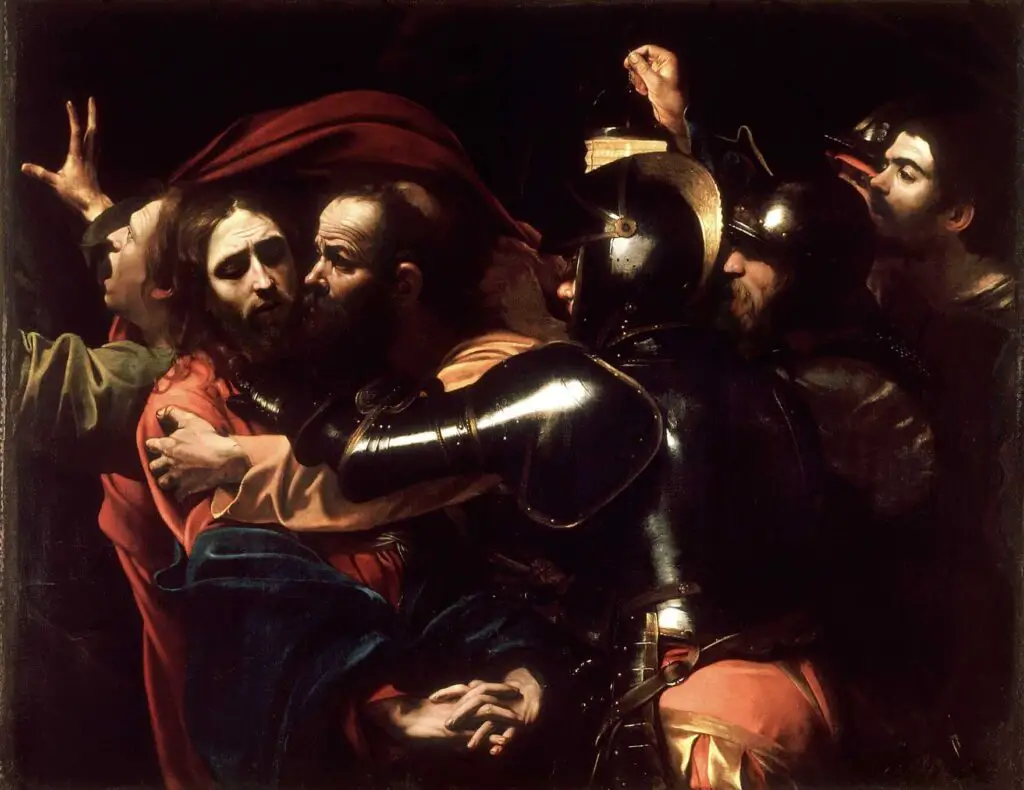
The expressions of fear, betrayal, and resolve on the faces of the figures add to the emotional intensity of the scene. Caravaggio’s use of light to illuminate the central action while casting the background into shadow heightens the drama and focuses attention on the critical elements of the narrative. This work is considered one of Caravaggio’s masterpieces for its composition, emotional depth, and technical brilliance.
10. Narcissus (1597-1599)
“Narcissus” illustrates the myth of Narcissus, the youth who falls in love with his reflection. Caravaggio’s depiction of this story focuses on the myth’s reflective and melancholy nature.
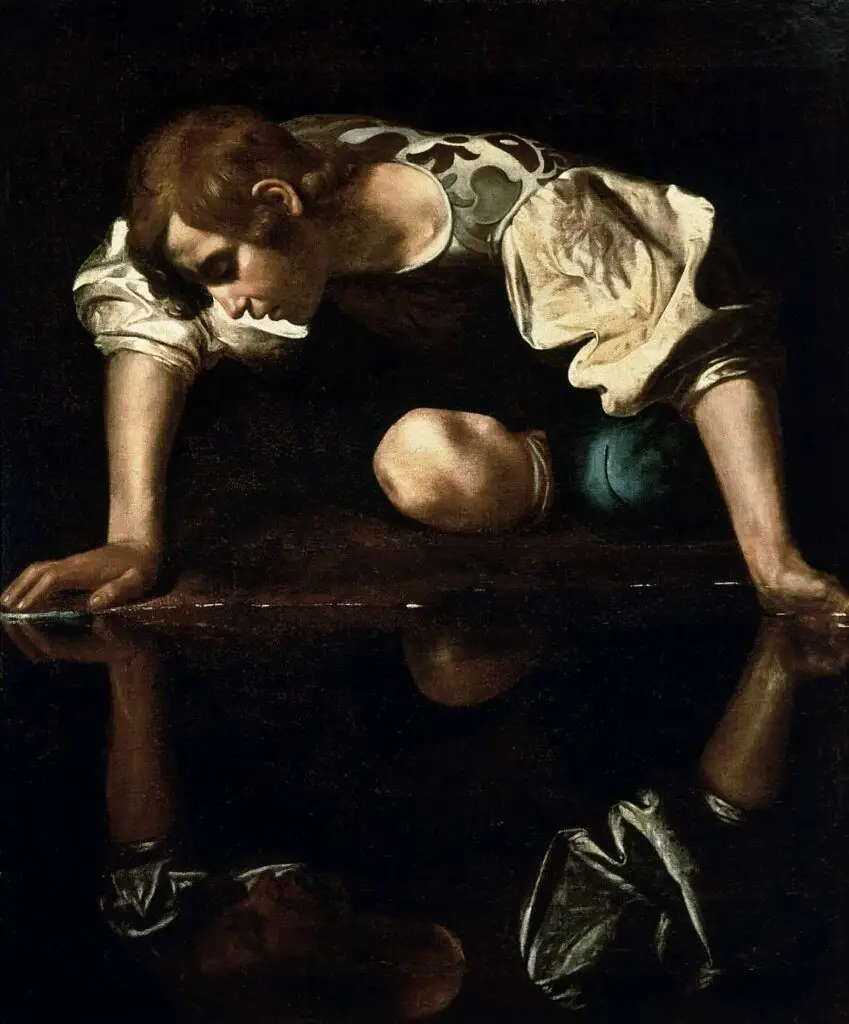
The painting’s symmetrical composition, with Narcissus gazing into the water, creates a harmonious and reflective image. Using light and shadow to highlight Narcissus’ face and reflection enhances the painting’s depth and realism. This work is significant for its exploration of themes of self-love and vanity, and its technical execution demonstrates Caravaggio’s mastery of chiaroscuro and naturalism.
11. Ecce Homo: (1605-1609) – Our Bonus Number 11 Masterpiece
Our bonus painting at number 11 is “Ecce Homo,” a newly discovered masterpiece by Caravaggio. This work stands out for several reasons, making it a worthy addition to our list of Caravaggio’s most remarkable paintings.

“Ecce Homo” tells the critical biblical story of Christ and Pontius Pilate, capturing a moment of profound significance. The painting portrays Christ presented to the crowd by Pilate, who declares, “Behold the man.
This scene is pivotal in the Passion narrative, highlighting suffering, injustice, and divine sacrifice themes. Caravaggio’s depiction of this moment is striking for its emotional depth and realism, drawing viewers into the intense drama of the event.
We love this painting for its masterful use of light and dark, a hallmark of Caravaggio’s style. The interplay of light and shadow not only adds a dramatic effect but also emphasizes the emotional gravity of the scene.
Caravaggio’s ability to convey such a powerful message through chiaroscuro is unparalleled. “Ecce Homo” exemplifies his skill in capturing the human condition and the spiritual significance of biblical events, making it a fitting choice for our bonus number 11 masterpiece.
Caravaggio’s most important paintings showcase his revolutionary approach to art, characterized by dramatic realism, emotional intensity, and masterful use of light and shadow. Each work captures a unique moment of human experience, blending sacred and secular themes with unparalleled technical skill.
Caravaggio’s influence on the art world is profound, and his masterpieces inspire and captivate audiences. Caravaggio has left an indelible mark on art history through these paintings, cementing his legacy as one of the greatest painters of all time.
Anita Louise Art is dedicated to art education, great artists, and inspiring others to find and create their art. We love art that uplifts and inspires. #ArtToMakeYouSmile! #ArtToMakeYouHappy!
If you are interested to see any of my art, you can find out more by clicking here. If you are interested in what inspires me and my paintings, you can discover more by clicking here.
We have a free newsletter and would love you to be part of our community; you can subscribe to the newsletter by clicking here. I would be happy to talk to you if you have any questions. You can reach me, Anita, by clicking here.
Subscribe to our Anita Louise Art YouTube Channel with great videos and information by clicking here.
Join us for our podcast “5 Minutes With Art.” Spend just 5 minutes a week with us to discover and learn about great art and artists. You can find out more about our podcast by clicking here.
Related Questions
Guide To Frida Kahlo’s Artwork, 10 Frida Kahlo Important Artwork
Frida Kahlo is regarded as one of the most significant figures in art history. Some of her most famous works make Frida Kahlo truly special; she has a unique blend of surrealism, bold ethnic traditions, and personal experiences, all while producing truly remarkable pieces that will continue to captivate viewers for generations to come.
By clicking here, you can learn more by reading Guide To Frida Kahlo’s Artwork, 10 Frida Kahlo Important Artwork.
Art Of Michelangelo, His Art And Legacy Explored
Michelangelo, a luminary of the Renaissance, has left an indelible mark on the world of art with his iconic creations. His influence persists, and is often cited as one of the most significant artists ever.
By clicking here, you can discover more by reading Art Of Michelangelo, His Art And Legacy Explored.
Paul Cézanne And Pablo Picasso: A Legacy Of Influence
Paul Cézanne and Pablo Picasso stand as titans in art, each sculpting the trajectory of modern aesthetics with their groundbreaking works. Many may underestimate the influence that Cezanne had on Picasso.
By clicking here, you can learn more by reading Paul Cézanne And Pablo Picasso: A Legacy Of Influence.

